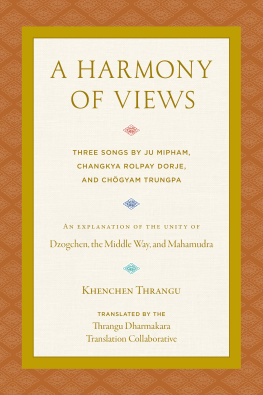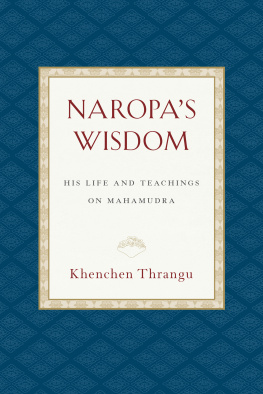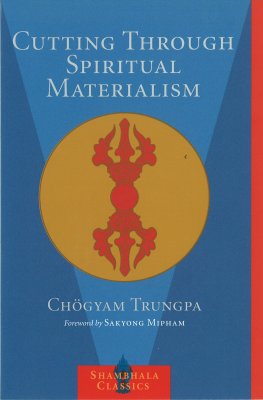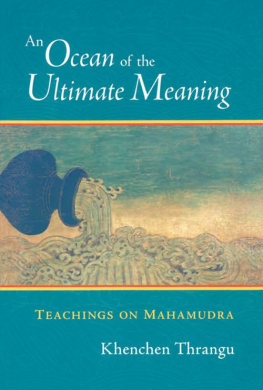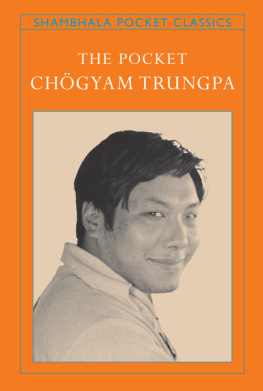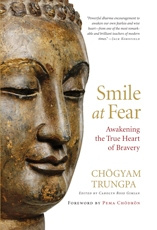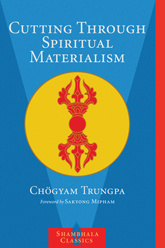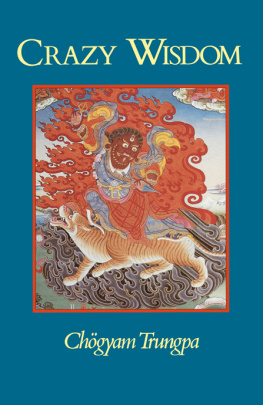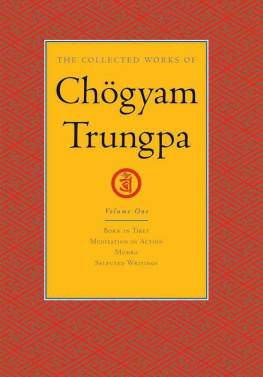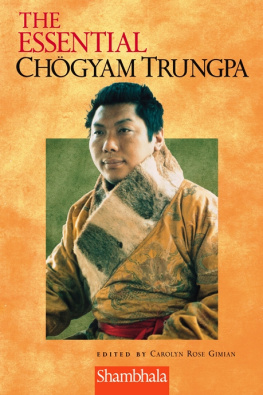Khenchen Thrangu - A Harmony of Views: Three Songs by Ju Mipham, Changkya Rolpay Dorje, and Chögyam Trungpa
Here you can read online Khenchen Thrangu - A Harmony of Views: Three Songs by Ju Mipham, Changkya Rolpay Dorje, and Chögyam Trungpa full text of the book (entire story) in english for free. Download pdf and epub, get meaning, cover and reviews about this ebook. year: 2020, publisher: Shambhala, genre: Religion. Description of the work, (preface) as well as reviews are available. Best literature library LitArk.com created for fans of good reading and offers a wide selection of genres:
Romance novel
Science fiction
Adventure
Detective
Science
History
Home and family
Prose
Art
Politics
Computer
Non-fiction
Religion
Business
Children
Humor
Choose a favorite category and find really read worthwhile books. Enjoy immersion in the world of imagination, feel the emotions of the characters or learn something new for yourself, make an fascinating discovery.
- Book:A Harmony of Views: Three Songs by Ju Mipham, Changkya Rolpay Dorje, and Chögyam Trungpa
- Author:
- Publisher:Shambhala
- Genre:
- Year:2020
- Rating:5 / 5
- Favourites:Add to favourites
- Your mark:
- 100
- 1
- 2
- 3
- 4
- 5
A Harmony of Views: Three Songs by Ju Mipham, Changkya Rolpay Dorje, and Chögyam Trungpa: summary, description and annotation
We offer to read an annotation, description, summary or preface (depends on what the author of the book "A Harmony of Views: Three Songs by Ju Mipham, Changkya Rolpay Dorje, and Chögyam Trungpa" wrote himself). If you haven't found the necessary information about the book — write in the comments, we will try to find it.
A Harmony of Views: Three Songs by Ju Mipham, Changkya Rolpay Dorje, and Chögyam Trungpa — read online for free the complete book (whole text) full work
Below is the text of the book, divided by pages. System saving the place of the last page read, allows you to conveniently read the book "A Harmony of Views: Three Songs by Ju Mipham, Changkya Rolpay Dorje, and Chögyam Trungpa" online for free, without having to search again every time where you left off. Put a bookmark, and you can go to the page where you finished reading at any time.
Font size:
Interval:
Bookmark:
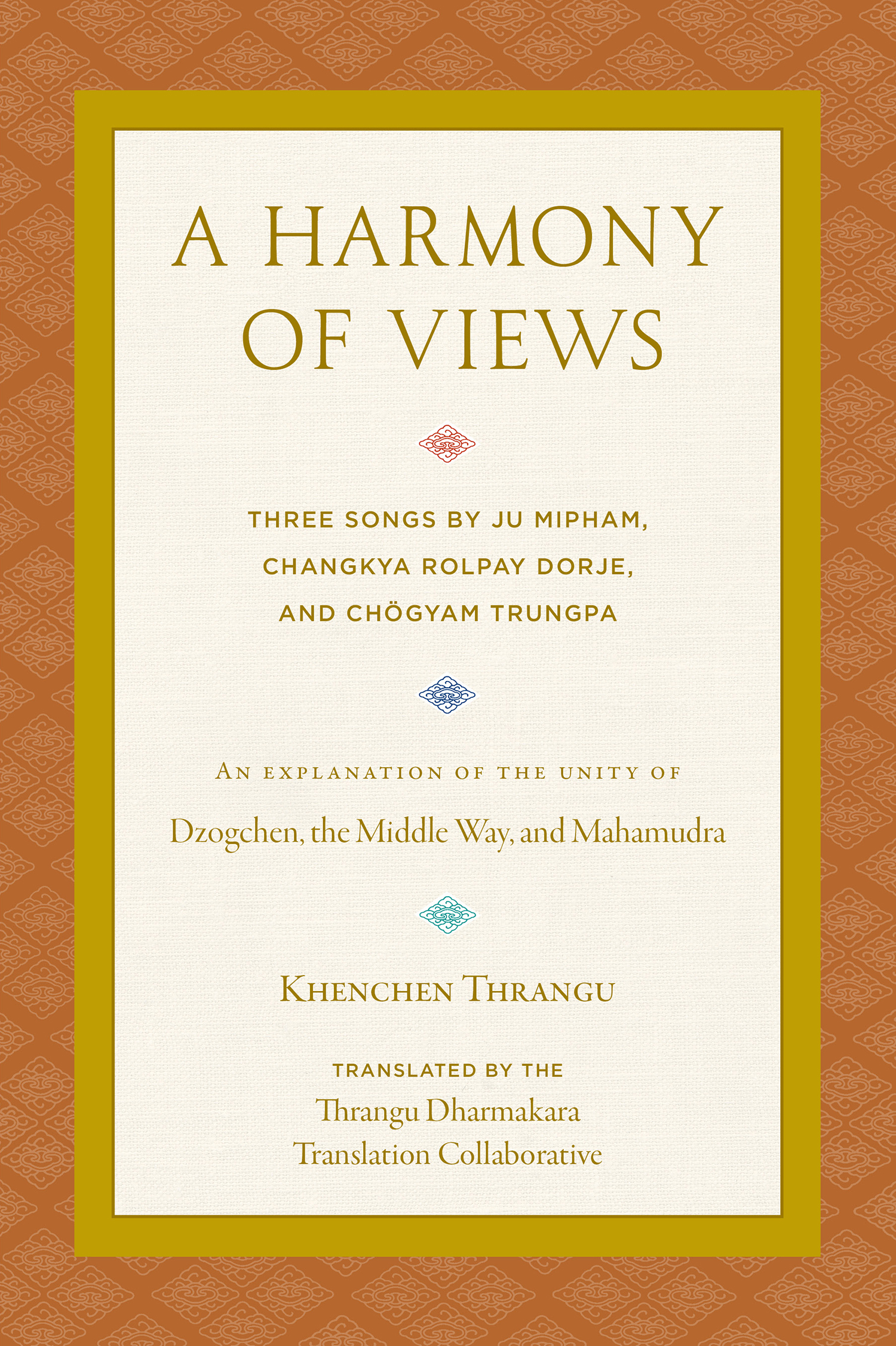
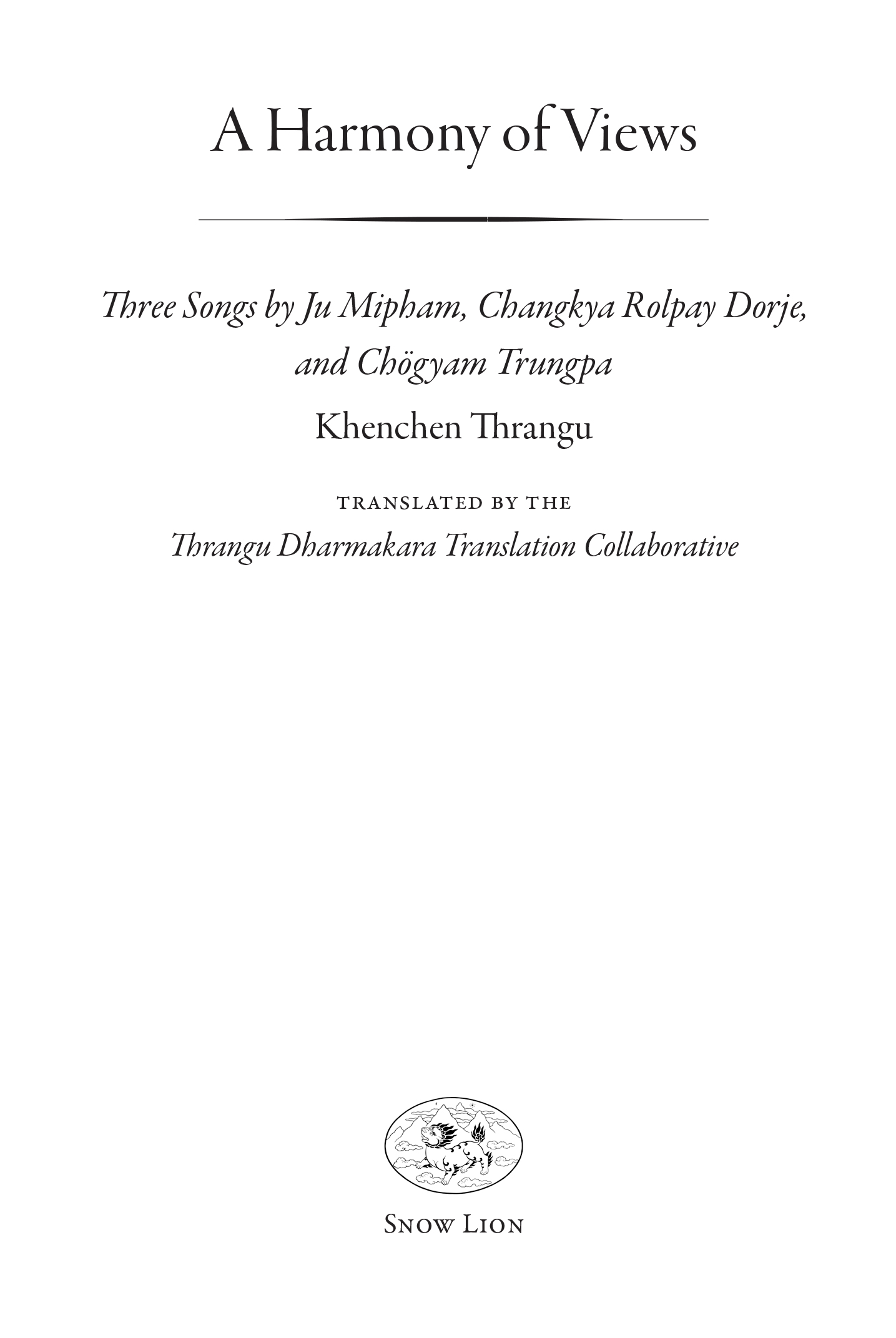
Snow Lion
An imprint of Shambhala Publications, Inc.
4720 Walnut Street
Boulder, Colorado 80301
www.shambhala.com
2020 by Vajra Vidya Retreat Center
A new English translation of Chgyam Trungpa Rinpoches Experiential Song of the View of Luminous Mahamudra Called The Music of Great Bliss used with permission from Lady Diana Mukpo. Translation by Thrangu Dharmakara Translation Collaborative, 2020 by Vajra Vidya Retreat Center.
Cover art: Robert Beer
All rights reserved. No part of this book may be reproduced in any form or by any means, electronic or mechanical, including photocopying, recording, or by any information storage and retrieval system, without permission in writing from the publisher.
First Edition
Snow Lion is distributed worldwide by Penguin Random House, Inc., and its subsidiaries.
LIBRARY OF CONGRESS CATALOGING - IN - PUBLICATION DATA
Names: Thrangu, Rinpoche, 1933 writer of commentary. | Mi-pham-rgya-mtsho, Jam-mgon Ju, 18461912. | Rol-pai-rdo-rje, Lcan?-skya II, 17171786.
Trungpa, Chgyam, 19391987.
Title: A harmony of views: three songs by Ju Mipham, Changkya Rolpay Dorje, and Chgyam Trungpa / Khenchen Thrangu; translated by the Thrangu Dharmakara Translation Collaborative.
Description: First edition. | Boulder, Colorado: Snow Lion, an imprint of Shambhala Publications, Inc., 2020. | A new English translation of Chgyam Trungpa Rinpoches Experiential Song of the View of Luminous Mahamudra Called The Music of Great Bliss used with permission from Lady Diana Mukpo. Translation by Thrangu Dharmakara Translation Collaborative. | Includes bibliographical references and index.
Identifiers: LCCN 2019051720 | ISBN 9781559394963 (trade paperback)
eISBN 9780834842878
Subjects: LCSH: Mi-pham-rgya-mtsho, Jam-mgon Ju, 18461912. | Rol-pai-rdo-rje, Lca-skya II, 17171786. | Trungpa, Chgyam, 19391987. | BuddhismTibet Region.
Classification: LCC BQ7610.H37 2020 | DDC 294.3/420423dc23
LC record available at https://lccn.loc.gov/2019051720
a_prh_5.5.0_c0_r0


We often read about the different schools of Buddhism, and we might wonder whether they share any essential, common view. This is the question addressed by the three songs that form the basis of this book. The great Geluk scholar Changkya Rolpay Dorje (17171786) wrote a song describing the view of the Middle Way, and then later the nonsectarian polymath Ju Mipham Rinpoche (18461912) and the influential Kagyu master Chgyam Trungpa Rinpoche (19391987) wrote songs modeled upon it that describe the views of dzogchen and mahamudra. One of the striking features of these songs is the metaphors they use: Changkya Rolpay Dorje compares the Middle Way to a mother, Ju Mipham compares dzogchen to a jewel, and Chgyam Trungpa compares mahamudra to a lover. But even though the imagery each author uses and the specific points they make are different, the songs share many characteristics. Indeed, the later songs follow the same structure as the earlier songs, in many places copying lines verbatim or just slightly altering them from the earlier songs. Together, the three songs show how the essential points of the view of these three practices are the same and reveal how Buddhisms various traditionsincluding the pinnacles of the Middle Way, dzogchen, and mahamudraare all harmonious.
These three songs are presented together here with commentary by Khenchen Thrangu Rinpoche, who explains how studying the profound view helps develop the necessary certainty to bring meditation practice to fruition. He shows how songs such as these can serve as antidotes for discouragement, especially for people who have had strong meditation experiences but find themselves unable to sustain that level of practice. Thrangu Rinpoche explains that, even in comparison to oral instructions and treatises, songs of this kind are of special benefit because of their engaging eloquence. The songs are not long, and they are a delight to read, reread, and memorize. By clarifying the view again and again in this way, they offer continual inspiration to practitioners. In addition to explaining the songs, Rinpoche also shares stories about the masters, including stories of his own personal connections with Ju Mipham and Chgyam Trungpa Rinpoche.
Rather than following the historical sequence of their composition, the songs are presented here in the order that they were taught by Thrangu Rinpoche over the course of a few weeks in the fall of 2009. He first taught Mipham Rinpoches and Changkya Rolpay Dorjes songs in Crestone, Colorado, and then Chgyam Trungpa Rinpoches song in Boulder, Colorado. During the oral teachings, Rinpoche would refer to points he had already explained, so when putting this book together, it seemed clearest to leave them in the order they were taught rather than match the order in which they were written.
Rinpoche structured his teachings around the outlines for these songs that are found in Mipham Rinpoches commentary on Changkya Rolpay Dorjes song, Khenpo Gangshar Wangpos commentary on Ju Miphams song, and Rinpoches own outline for Chgyam Trungpa Rinpoches song. These three outlines provide the basis for the chapter titles and subheadings used in this book and are included in their entirety in the appendices.
A CKNOWLEDGMENTS
A book such as this is the product of many peoples efforts and generosity. In particular, we would like to thank Karma Cholha for preparing the initial transcription of Rinpoches teachings and Nikko Odiseos and Michael Wakoff at Shambhala Publications for shepherding this book through the editorial and production process and into print. Thanks are also due to Lady Diana Mukpo for permission to include a new translation of Chgyam Trungpa Rinpoches song in this book. Despite all of their assistance and care, it is still possible that there are some faults in this book, and they are solely our own. Still, we hope that this book can help all its readers understand that despite the differences in terminology and explanation, all the different Buddhist schools come from a single teacher, the Buddha.

This book is about three songs: Ju Mipham Rinpoches Experiential Song of the Dzogchen View Called The Music of Sweet Sounds (often referred to by the abbreviated title Song of the Dzogchen View), Changkya Rolpay Dorjes Song of the View Called Recognizing My Mother (referred to as the Song of the Middle Way View), and Chgyam Trungpa Rinpoches Experiential Song of the View of Luminous Mahamudra Called The Music of Great Bliss (referred to as the Song of the Mahamudra View). Even though it has not been very long since the Secret Mantra Vajrayana spread to the West (compared with Tibet and India, where it has been spreading for over thirteen hundred years), many Westerners have great faith in the dharma. They practice diligently and study well, and they are knowledgeable. This is extremely fortunate. The Sixteenth Gyalwang Karmapa and other great teachers came to the West, taught the dharma, and gave pointing-out and other instructions. Many practitioners have developed meditation experience and actual realization as a result of their diligence, perseverance, and willingness to endure the necessary hardships. This is wonderful. These practitioners often ask me this kind of question: I had an amazing realization, a wonderful meditation experience, but it lasted only for a very short period of time. I wasnt able to extend it for very long. What instructions will make the experience last?
Font size:
Interval:
Bookmark:
Similar books «A Harmony of Views: Three Songs by Ju Mipham, Changkya Rolpay Dorje, and Chögyam Trungpa»
Look at similar books to A Harmony of Views: Three Songs by Ju Mipham, Changkya Rolpay Dorje, and Chögyam Trungpa. We have selected literature similar in name and meaning in the hope of providing readers with more options to find new, interesting, not yet read works.
Discussion, reviews of the book A Harmony of Views: Three Songs by Ju Mipham, Changkya Rolpay Dorje, and Chögyam Trungpa and just readers' own opinions. Leave your comments, write what you think about the work, its meaning or the main characters. Specify what exactly you liked and what you didn't like, and why you think so.

